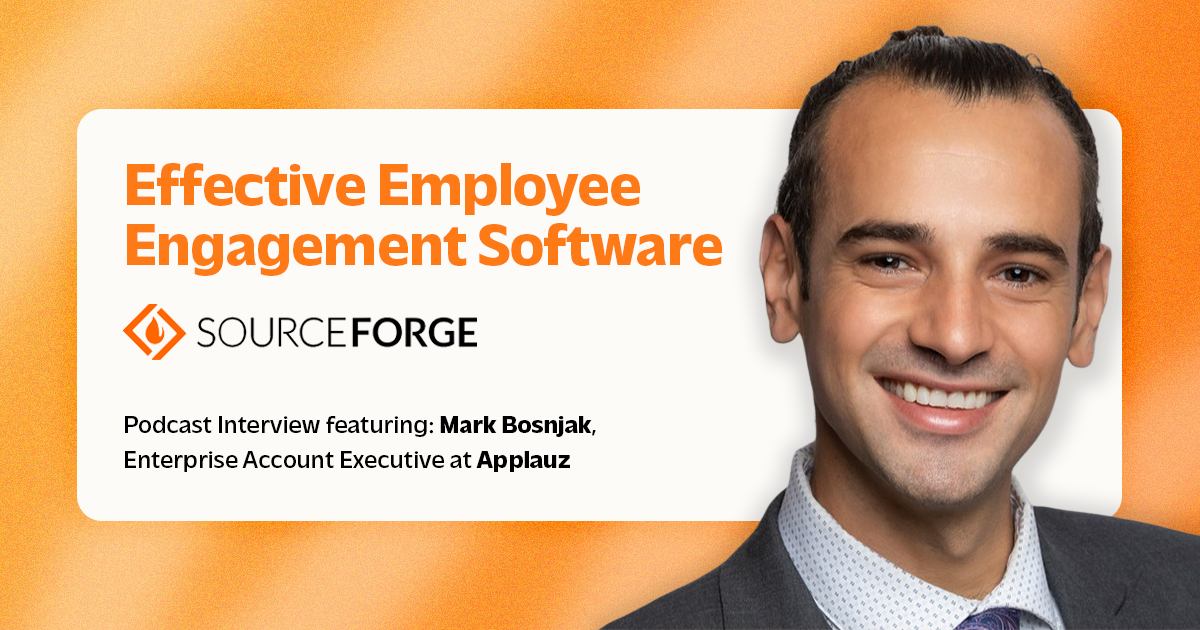 What are pulse surveys?
What are pulse surveys?
Are employee surveys still effective?
Leaders worldwide have extensively explored the use of surveys to seek feedback and evaluate employee engagement. However, there has been recent debate on the effectiveness of these surveys in modern workplaces, where modern employees are motivated by modern incentives. Does the tried-and-true employee survey still make the grade when you consider the swiftly advancing trends and technologies dominating work culture?
It’s a mix of both yes and no. The traditional survey remains as significant as ever but the way you deliver it is what makes all the difference.
Surveys represent the bare minimum companies can offer to provide their employees with an opportunity to feel heard. So, how do you do it in a way that not only meets this fundamental need but also predicts behavior and gathers precise inputs and insights? And what’s the best, most humane way to empower your employees to actively contribute to the conversation?
Enter pulse surveys — they are a brief set of questions regularly sent to employees to gather feedback and gauge sentiment within an organization consistently.
These surveys provide organizations with the flexibility to continuously measure whatever they deem important and prove particularly effective as part of an employee engagement program.
Most commonly, the term "pulse" is used to encompass everything beyond annual or bi-annual engagement surveys. In the context of an HR survey tool, pulse surveys differ substantially from engagement surveys, lifecycle surveys (onboarding, exit, candidate reaction, etc.), and ad-hoc employee surveys by essentially serving as a mechanism for gathering feedback through shorter, more frequent check-ins. They aren't limited to particular subjects or content and typically monitor the same item over a distinct period.
Pulse surveys, or variations of them, have been around for a while, but in recent years, they have slowly evolved into the preferred method for collecting real-time feedback and informing data-driven decision-making. Their rise gained momentum just before the pandemic, attributed in part to the increasing presence of millennials in the workforce advocating for their voices. The pandemic accelerated this trend, providing a means to gather candid employee thoughts without informal check-ins.
Major tech giants — from Apple and Etsy to Airbnb, Microsoft, and Amazon — have embraced pulse survey apps and platforms to understand their employees' perspectives. This shift isn't limited to large corporations; even smaller enterprises are discarding lengthy, infrequent surveys in favor of updating their employee feedback systems with pulse survey tools. The most standout feature is that they are shorter, more enjoyable surveys that allow employees to provide input without dedicating extensive time, marking a departure from the traditional yearly surveys.
As businesses adapt to create company cultures that emphasize employee care and engagement, let's explore pulse surveys and their positive impact on cultivating healthy work environments.
Pulse surveys are a quick and straightforward way to gather anonymous employee feedback.
No more long, dull surveys filled out once a year. Modern companies prefer an updated solution. Pulse surveys are short, easy, and even fun to fill out. A typical cadence is five questions sent every week, so employees only need to answer one question per day.
When employees fill out one long survey per year, it may not always reflect their true satisfaction levels. As a result, Pulse surveys are considered a more robust way to gather accurate information. The ongoing nature of Pulse surveys enables managers to take a more precise “pulse” of employee well-being.
 Why are pulse surveys important?
Why are pulse surveys important?
Employee unhappiness strongly affects business. When satisfaction is low, productivity suffers. And if solutions aren't put in place, disengagement and turnover are just a step away.
According to a 2023 Gartner study, fewer than one-third of employees express being engaged, enthusiastic, and energized by their work. Per a Gallup study, a mere 32% of employees are actively engaged, with 17% expressing active disengagement. Millennials and Gen Z are disengaging mentally from their work and are not hesitant to voice their sentiments about it.
But employees are only sometimes ready and willing to voice their opinions. Therefore, it's vital to offer a "safe space" where employees can speak their minds anonymously. As a result, organizations need to get to the bottom of the issue and develop solutions.
Survey results allow leaders to uncover the precise source of the problem and apply more targeted solutions. Not only do you invest your time and resources in the right HR survey tools but you can properly delve deep into what’s going on with employees, identify and characterize emerging workplace trends, and act quickly to seize opportunities or address any issues.
This is a consensus shared by many workplace experts. For example, the head of People Analytics at Facebook, Scott Judd, co-wrote an insightful article about employee surveys. Employee Surveys Are Still One of the Best Ways to Measure Engagement, argues employee surveys remain a critical "high-performance" HR practice.
Though you cannot ever abandon them entirely in the workplace, they can be modified to meet changing norms and expectations.
Pulse surveys are valuable because they’re multifaceted. Conducted weekly, they serve as a dynamic tool for tapping into employee insights, especially during pivotal moments like workforce transformations.
- Actionable Insights: The streamlined format of pulse surveys, featuring just a few questions and a mix of multiple-choice and free-text responses, ensures that the gathered data is not only relevant but immediately actionable.
- Precision-Targeted Interventions: The personalized touch, especially if you’re considering factors like role and location, empowers leaders to understand the unique significance of issues for diverse employee groups, facilitating precision-targeted interventions.
- Candid Employee Feedback: If you place a strong emphasis on privacy through data anonymization, pulse surveys establish a candid platform for unfiltered employee feedback, encouraging open and honest communication.
- Amplified Impact of Contributions: A weekly sharing of survey results goes beyond informing employees; it amplifies the impact of their contributions, creating a collective sense of responsibility for nurturing as well as enhancing organizational culture.
- Continuous Improvements: The ongoing nature of pulse surveys underscores your business’s unwavering commitment to constant improvement, demonstrating your will to adapt and improve over time.
- Collaborative Data Expertise: Deploying data engineers, scientists, analysts, and translators behind the scenes can highlight the pivotal role these tools play in translating survey data into tangible insights, ensuring a comprehensive and nuanced understanding.
- Demonstrable Impact of Continuous Listening: The real game-changer is the surveys' ability to demonstrate the tangible impact of continuous listening, with core themes shaping decisions that touch both personal and professional dimensions of employees' lives.
In today's culture, work teams are all about agility.
Hybrid models, gig, and project work are gaining ground, while employee expectations are in flux, with many craving not just the usual compensation and benefits but also more flexibility, connectivity, and work that's both fulfilling and purposeful. Pulse survey tools are precisely the solution needed to streamline such work.
 How do pulse surveys differ from annual employee engagement surveys?
How do pulse surveys differ from annual employee engagement surveys?
The fact of the matter is that employee engagement is always shifting, just like your general happiness levels.
It ebbs and flows in the same employee throughout their tenure in your company. Given the fluid nature of engagement, it simply can’t be measured once a year with a long, dull survey.
You can often spot the lack of employee motivation in the annual assessment when they show reluctance to participate. They might start the survey and ditch it midway, or worse, not bother with it altogether. A clear red flag is when they consistently choose the same answer for every question. This pattern speaks volumes, signalling that previous surveys yielded no tangible communication or action. It's a stark reminder that engaging employees goes beyond just distributing surveys; there needs to be a visible impact and follow-through.
Are yearly surveys a thing of the past?
Amid constant waves of disruption, does the old-school annual survey approach keep a continuous conversation alive with employees? How much trust and partnership is it truly building within the workforce? Does it spark lasting changes to employees' workplace experiences and performance? Are these surveys retaining top performers?
If employees invest their time in filling out a supposedly crucial survey but see no tangible changes as a result, it renders the survey process seemingly pointless, leaving them feeling unheard. This sentiment is particularly disheartening when it comes to employee experience surveys, as it implies that the employee's perspective holds little importance for the employer.
Businesses make the employee survey process time-consuming and dull. They also fail to communicate the benefits to their workforce. As a result, completing surveys becomes an inconvenient task for employees. Employees then rush through filling out surveys, skipping over entire questions — distorting the resulting data and insights.
Poorly designed HR survey tools also raise concerns about anonymity and potential retaliation, prompting employees to provide cautious or politically correct answers, hindering businesses from truly understanding their employees' desires, needs, and morale. Additionally, the annual format presents a major drawback — it confines feedback to a single window of time in a fast-paced world, missing out on a wealth of valuable insights and opportunities for improvement.
In short: Long, complicated surveys sent once a year are a thing of the past.
Methods of communication and gathering feedback should be modernized to fit the 2024 workplace.
Use a pulse survey tool
Embracing the Pulse Survey approach opens up immediate insights into employee sentiment, providing your leaders not only with real-time data on satisfaction and performance but also a continuous listening strategy. This strategy becomes pivotal in swiftly identifying and addressing changes affecting your workers at the moment.
Pulse Surveys are rapidly overshadowing the traditional yearly employee survey, and for good reason. The advantages are crystal clear:
- They offer a more precise gauge of employee engagement.
- Managers can adapt policies and practices on the fly, thanks to real-time feedback.
- They are both easy and enjoyable for employees, giving them a voice and ensuring a higher response rate.
- They are an excellent tool for driving positive change within the organization.
Contrasting with the limitations of an annual survey, where satisfaction levels may not be accurately captured, pulse surveys emerge as a robust alternative. Their ongoing nature allows managers to take a precise "pulse" of employee well-being, ensuring a continuous and accurate understanding of the workforce's sentiments.
 What makes pulse surveys so effective?
What makes pulse surveys so effective?
You might be wondering how surveys can impact engagement levels. There are a few key reasons why surveys are an essential component of managing workplace engagement.
Pulse surveys are a diagnostic tool
When you are sick, a doctor will typically run tests before choosing the correct treatment. Without running tests first, the doctor risks applying the incorrect medication. The same process occurs within organizations.
When a workplace culture is “sick” (i.e., low employee engagement and morale), smart businesses must run tests to understand the underlying problem. Employee surveys are a test that helps leaders uncover workplace issues so that the proper treatment and solutions can be applied. As a result, engagement issues are treated more quickly and effectively.
On the other hand, some businesses don’t focus on investigation and jump straight to treatment, for example, by buying into short-term fixes like ping pong tables and free snacks. As a result, they will likely miss the root of the problem. Naturally, employee unhappiness will continue.
Prioritizing surveys gives employees a voice
All people desire to feel seen and heard. When people don't feel seen and heard in their relationships (including their relationship with their employer), this can make them frustrated. Chronically feeling unheard makes people feel helpless and disempowered.
It's only a matter of time before employees feel disengaged. A 2020 study asked remote employees how they wish to be recognized. One of the top responses: "Ask us how we feel and what we need." How simple!
HR survey tools are not a cure-all for disengagement. However, when HR teams prioritize employee feedback, it demonstrates to your workforce, with action, that the organization is prioritizing their satisfaction and happiness. This feeling will work to mitigate feelings of disengagement.
Pulse surveys can elevate remote teams
We are currently living in an era where working from home is quickly becoming the norm for professionals who perform knowledge-based work.
According to Buffer's 2020 State of Remote Work Report, 98% of respondents said they would like to continue working remotely for the rest of their careers.
Despite the benefits of remote work, there's a lingering skepticism about its impact on company culture and employee engagement. How can we gauge employees’ connection to work when the traditional office is replaced by a remote setting?
Here's where pulse surveys come into play, elevating and fine-tuning the performance of remote teams.
- Dissatisfaction can fly under the radar in a remote setting: When managers are in the same office as their employees, it is easier to assess morale. Body language, tone of voice, and general enthusiasm are easy to detect when you are sitting face-to-face with someone for 40 hours a week. Simply put, it’s easy to tell if someone is “off” from their normal baseline. In contrast, this is much more difficult in a remote work setting.
- Transitions can be challenging: Transitioning into a completely new style of working can be difficult for some employees. A change in environment can recharge some people, but it can be a source of stress for others. Surveys allow managers and leaders to understand where employees are having a difficult time adjusting.
- Prioritize company culture: One of the biggest challenges in running a remote organization is maintaining company culture. Employee survey software gives employees a voice and helps leaders understand where the remote culture is falling short. When employees are isolated in their home offices, it’s easy to forget that they are part of a larger team. Sending out surveys is a reminder that they belong to a larger organization. And, more importantly, one that is striving to prioritize their well-being.
Although work is shifting to a distributed model, this doesn't mean employers should retire employee survey efforts. In fact, during the transition period into remote work, it's even more important to be in touch with employee's well-being.
 What can pulse surveys measure?
What can pulse surveys measure?
Many businesses send out surveys to go through the motions. They know it’s a critical practice. But there is no clear goal in mind.
Have a clear goal concerning what you’re measuring
Don’t send surveys just to “go through the motions.” Whether you outsource the work or build a survey in-house, you always need to have a clear goal.
For example, are you trying to investigate a complicated HR issue like high turnover? Or are you simply trying to get a general sense of employee satisfaction? Or maybe you specifically want feedback about a new policy? Ultimately, the goal of the survey will inform the questions you ask. So be sure to articulate a clear goal before you start to build a survey.
Take the “pulse” of many workplace topics
Suppose your goal is to take the general pulse of employee satisfaction. In that case, it’s important to design questions to measure many areas of employee engagement.
For instance, if you only asked questions related to management, you might only receive an incomplete view of employee dissatisfaction. What about all the other areas of the workplace that are important to engagement? For example, challenge, mission, purpose, goals, autonomy, diversity, etc.
Pulse surveys sample questions and examples
What do you like about your job?
You can probably list a few things that make you happy and satisfied at work.
In other words, many areas of the work environment contribute to employee happiness. So if the goal of surveying employees is to measure satisfaction accurately, you must examine all areas of employee engagement.
As such, Pulse Survey questions are designed to measure sentiment regarding a variety of workplace topics.
At Applauz, we have developed our list of the fundamental drivers of employee engagement.
- Employee Sentiment
- Career Growth
- Leadership
- Diversity & Belonging
- Wellness & Balance
- Recognition & Rewards
- Mission & Purpose
- Goals & Alignment
- Autonomy & Empowerment
- Benefits & Compensation
- Team & Communication
- Safety & Security
- Work & Performance
- eNPS
Here are some examples of questions for a few key topics.
These questions are answered on a sliding scale from strongly agree to strongly disagree. Or with a simple “yes,” “no,” and “maybe” response.
Diversity & Belonging
- Our organization values diverse opinions and ideas.
- Do your coworkers treat each other with respect?
- My manager shows me the same respect he shows my teammates.
Recognition & Rewards
- Receiving recognition from my manager and my peers motivates me.
- Has your manager given you any recognition in the past month?
- The last time you successfully accomplished a project, did you receive any recognition?
Autonomy & Empowerment
- I generally feel challenged at work.
- Do you feel responsible for your team’s performance?
- I would perform better if I were given more autonomy.
Organizing questions by topic allows managers to pinpoint exactly which area of your workplace needs improvement.
As a result, surveying employees should shed light on employee pain points. And also help identify the root cause of common HR issues, such as employee turnover.
 How long should a pulse survey be?
How long should a pulse survey be?
When it comes to the length of pulse surveys, there's no one-size-fits-all answer.
However, as a handy rule of thumb, aim for a sweet spot of 10-15 questions. Of course, the length depends on your specific goals! Feel free to fire off a brief 1-2 question survey for quick, targeted insights. The key is to steer clear of survey overload, especially with frequent distributions, to prevent survey fatigue.
Here's a tip: pulse surveys don't follow strict rules— you get to decide their focus. This flexibility allows your business to zero in on what truly matters in the here and now.
Who are you targeting?
Pulse surveys for employees offer a fantastic avenue for more personalized campaigns, moving beyond the cold and static template. It's crucial to be discerning about the recipients of your pulse surveys; nobody wants to receive questions that don't resonate with their role or experience! This is where the magic of demographic data comes into play.
By leveraging demographic details, you can tailor your campaigns to specific groups — whether it's a team undergoing recent changes, participants in an event, or individuals with a certain tenure in the organization. The opportunities to get specific and granular are abundant, ensuring that each pulse survey hits the right notes for the right audience.
 How often should you use pulse surveys?
How often should you use pulse surveys?
Nailing employee surveys is no small feat.
Even with the ease that pulse surveys bring to sending and collecting data, they're not immune to mishaps. You can ask the wrong questions, you can neglect follow-ups, you can use inappropriate response scales, or rely on poor frequency. Indeed, there are plenty of pitfalls that can result in collecting flawed data and distancing your recipients.
Out of all the potential pitfalls for your pulse survey, poor timing is the easiest to stumble upon. Sending surveys too often may irritate people while sending them too infrequently means missing out on valuable feedback for meaningful analysis. Moreover, the length of a survey can greatly impact whether people are willing to complete it.
As a general rule of thumb, there's an inverse relationship between the length of a survey and how often you should send it out. Therefore, it’s all about striking a delicate balance, as timing truly makes all the difference.
Think, what is the desired frequency for you to process and present survey results? Also, how promptly can you review or implement the results?
It's essential to ensure that the surveys align with the organization's pace of operations and its ability to enact meaningful responses based on the feedback received. The frequency of survey administration and the agility in responding to the insights gleaned play pivotal roles in leveraging surveys as effective tools for continuous improvement.
For employee engagement surveys, sending them out once a year is common, as we mentioned earlier, especially when dealing with longer forms. However, running them more frequently risks annoying employees and triggering survey fatigue, ultimately distorting your data and dampening engagement.
When it comes to short one-question pulse surveys, only once a year seems impractical. It would limit your data to a single point, hindering your ability to track trends accurately. To capture changes in behavior or sentiment, frequent pulse surveys are essential.
Best Practices
When setting up your survey schedule, whether you're gauging ongoing change or gathering insights from a recent departmental meeting, keep these principles in mind.
Striking the right balance is key — aim for no more than weekly and no less than monthly.
Align the length of your survey with its frequency; shorter surveys can be dispatched more frequently, while longer ones should have a less frequent spotlight.
To effectively track changes, make it a practice to send surveys at least quarterly.
Establishing benchmarks early on provides a solid foundation for meaningful measurements during periods of change. You need to find a strategy where you can send surveys often enough to stay in tune with evolving trends, but not so frequently that you hinder your ability to take decisive action between surveys.
-2.jpg?width=800&height=534&name=group-diverse-people-joined-hands-together-teamwork%20(1)-2.jpg) How can your employees benefit from pulse surveys?
How can your employees benefit from pulse surveys?
Finally, after going through the many advantages that employee engagement measures bring in terms of productivity and growth, it is crucial to circle back to the core of your business's work: your employees.
Encouraging employees to share anonymous and honest feedback with leadership is paramount. Not only does this feedback provide an opportunity to identify and address pressing issues and prioritize areas that contribute to employee happiness, but it also serves as a gauge of overall satisfaction within your company. By ensuring your employees are happy in their current roles and with your organization, you not only retain valuable team members but also attract high-quality applicants.
You want your employees to feel genuinely heard.
If your organization fails to provide employees with a secure and supportive avenue to voice their concerns, they may seek alternative outlets to express themselves. For instance, a disheartened employee might turn to platforms like LinkedIn to publicly address workplace issues.
On the other hand, by attentively listening to what employees communicate through surveys, you can detect negative sentiments and potential issues early on. This proactive approach allows for timely interventions to prevent mishaps and, in some cases, avert legal risks or litigation.
Crucially, employees experiencing dissatisfaction with their work environment or relationships with colleagues often grapple with low morale. This diminished morale not only erodes confidence in the organization but also hampers productivity. Empowering employees to provide bottom-up feedback through surveys fosters a sense of value, thereby boosting morale. Additionally, cultivating a workplace where employees evolve into a team of content and happy individuals fosters a positive attitude toward their place of work.
Here are some ways you can incentivize your employees to take part in pulse survey measures:
- A frequent concern that holds back employees from taking part in surveys is the worry about facing negative outcomes or backlash for sharing their thoughts. That's why it's crucial to make sure that the survey responses are kept confidential and anonymous. Let's be sure to convey this message to our employees clearly and repeatedly.
- Why not boost employee survey participation by offering rewards like gift cards, vouchers, or even a free lunch? It can be any material that adds a little extra joy to their day. You can even celebrate entire teams or departments with the highest response rates by dishing out certificates, trophies, or shout-outs. This way, you’re not just tapping into their intrinsic and extrinsic motivation; we're turning the survey into something fun and meaningful for our fantastic team!
- Have you made sure your team understands why this survey matters and how it's a win-win for both them and the whole organization? Do they know the survey's goals, expectations, and timelines? Have you highlighted the positive impacts from past surveys, like changes in policies, operations, or culture that boosted employee satisfaction, performance, and well-being? Sharing these success stories can tap into their sense of purpose and make them feel more engaged in the process.
- To boost the employee survey response rate, it's crucial to close the loop by offering feedback and follow-up on the survey outcomes and subsequent actions. Take care to share the standout findings and insights from the survey, appreciating the valuable contributions and suggestions made by your team. At each and every point, clearly communicate the steps you’re taking in response to the survey results, and you can even go the extra mile and get your employees to help bring these changes to life! Their involvement in both implementing and evaluating these changes is key to making your workplace even better together.

 Optimize Your pulse surveys
Optimize Your pulse surveys
Use a pulse survey tool
If your budget allows, shop for a third party pulse survey tool. These days, you can outsource the work of building pulse surveys affordably.
The benefit: These tools take care of most of the work of creating and administering anonymous surveys.
Expert-driven questions are pre-set to measure critical areas of engagement. These tools also offer detailed reporting features. In short, the program builds dashboards and interprets the data, so areas of improvement are quickly identified for you.
Pro Tip: Applauz employee Pulse Survey tool is designed to measure every area of employee engagement.
Have a clear goal in regards to what you’re measuring
Many businesses send out surveys to go through the motions. They know it’s a critical practice. But there is no clear goal in mind.
Don’t send surveys just to “go through the motions.” Whether you outsource the work or build a survey in-house, you always need to have a clear goal.
For example, are you trying to investigate a complicated HR issue like high turnover? Or are you simply trying to get a general sense of employee satisfaction? Or maybe you specifically want feedback about a new policy?
Ultimately, the goal of the survey will inform the questions you ask. So be sure to articulate a clear goal before you start to build a survey.
Take the “pulse” of many workplace topics
Suppose your goal is to take the general pulse of employee satisfaction. In that case, it’s important to design questions to measure many areas of employee engagement.
For instance, if you only asked questions related to management, you might only receive an incomplete view of employee dissatisfaction. What about all the other areas of the workplace that are important to engagement? For example, challenge, mission, purpose, goals, autonomy, diversity, etc.
Promote pulse surveys to your workforce
This seems like a no-brainer, but many businesses fail to promote and position their survey efforts. As a result, employees may forget to fill out surveys or generally feel less inclined to complete them.
The solution: Explain to employees why responding to the survey will benefit them and their teams. It's about cultivating a greater culture where employees are given a voice and heard. Appeal to their interests. Let them know this survey's ultimate purpose is to improve the employee experience.
Pro Tip: Remind and reassure employees that surveys are 100% anonymous.
Share results and announce next steps
Employees are likely to be curious about the survey results. It’s also reassuring to know that other employees are experiencing the same pain points as them. As such, make sure the HR team shares the most important survey findings regularly.
Also, it’s crucial to highlight which issue you will be prioritizing. For example, your results might show employee recognition is lacking. As such, you should notify your workforce the HR team will prioritize the launch of an employee recognition program.
Follow through with action
This is the final and most important step: following through on your promises.
If you are sending surveys but doing nothing with it, this can be worse than not asking. Simply put, your survey efforts will ultimately be futile if action is not taken to fix them.
Taking action also creates a positive feedback loop. When employees acknowledge leaders are taking action on their feedback, they will be more eager to respond to future surveys. Survey results will only become more honest and accurate.
 Final Thoughts
Final Thoughts
What sets apart a stellar pulse survey from a lacklustre one? It all boils down to a well-thought-out and informed strategy.
Regrettably, many managers and HR professionals have lagged in adopting the latest advancements in survey design. Despite the significant shifts in the field over the last decade and a fivefold surge in publications detailing survey results in corporations, numerous managers still cling to design principles formulated decades ago.
While employee surveys play a pivotal role in enhancing engagement, retaining talent, and elevating overall organizational performance, their effectiveness hinges entirely on the subsequent actions taken based on feedback.
Unfortunately, many organizations fall short in following through after conducting surveys. For surveys, especially confidential ones, to be effective, they must provide a safe space for employees to voice their opinions, concerns, and ideas authentically.
Therefore, pulse surveys serve as a swift tool to pinpoint areas for improvement promptly. They offer a direct line into your employees' current thoughts and feelings, with survey questions tailored to address the most pressing matters. Plus, there's no need to unravel hours of raw data; pulse survey tools distill results into clear, easily digestible reports and dashboards, eliminating the guesswork.
Happy and engaged employees are the bedrock of exceptional customer experiences. By enhancing employee satisfaction through pulse surveys, you indirectly influence customer satisfaction and loyalty, fostering a culture of continuous improvement.
 Applauz on SourceForge: Effective Employee Engagement Software
Applauz on SourceForge: Effective Employee Engagement Software







